

Viking. Sea-faring Danes depicted invading England.

Illuminated illustration from the 12th century Miscellany on the Life of St. Edmund. Pierpont Morgan Library. Facilitated by advanced seafaring skills, and characterised by the longship, Viking activities at times also extended into the Mediterranean littoral, North Africa, the Middle East and Central Asia. Following extended phases of (primarily sea- or river-borne) exploration, expansion and settlement, Viking (Norse) communities and polities were established in diverse areas of north-western Europe, European Russia, the North Atlantic islands and as far as the north-eastern coast of North America. Popular, modern conceptions of the Vikings—the term frequently applied casually to their modern descendants and the inhabitants of modern Scandinavia—often strongly differ from the complex picture that emerges from archaeology and historical sources.
Etymology Other names. Viking Age. The Viking Age is the period from 793 to 1066 in European history, especially Northern European and Scandinavian history, following the Germanic Iron Age.
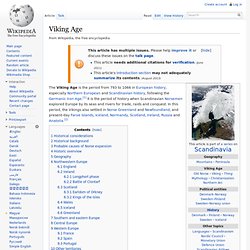
It is the period of history when Scandinavian Norsemen explored Europe by its seas and rivers for trade, raids and conquest. In this period, the Vikings also settled in Norse Greenland and Newfoundland, and present-day Faroe Islands, Iceland, Normandy, Scotland, Ireland, Russia and Anatolia.[2] Historical considerations[edit] In England, the Viking Age began on 8 June 793[3] when Vikings destroyed the abbey on Lindisfarne, a centre of learning that was famous across the continent.
Monks were killed in the abbey, thrown into the sea to drown, or carried away as slaves along with the church treasures. Vikings were portrayed as uniformly violent and bloodthirsty. The first challenges to the many anti-Viking images in Britain emerged in the 17th century. Historical background[edit] Viking Voyages in the North Atlantic Historic overview[edit]
SuffolkWeb Kids - Ancient Civilizations. Ancient Egypt - Meet the gods and goddesses!
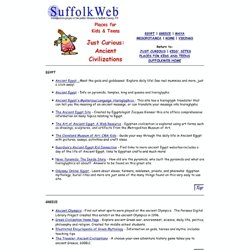
Explore daily life! See real mummies and more, just a click away! Ancient Egypt - Info on pyramids, temples, king and queens and hieroglyphs. Ancient Egypt's Mysterious Language: Hieroglyphics - This site has a hieroglyph translator that can tell you the meaning of an ancient message, or can translate your message into hieroglyphs.
The Ancient Egypt Site - Created by Egyptologist Jacques Kinnear this site offers comprehensive information on many topics relating to Egypt. The Art of Ancient Egypt: A Web Resource - Egyptian civilization is explored using art forms such as drawings, sculptures, and artifacts from the Metropolitan Museum of Art. The Cleveland Museum of Art: CMA Kids - Guide your way through the daily life in Ancient Egypt with pictures, essays, activities and craft ideas. The Kids Pages; Fun Facts About The Vikings for Children. The Vikings were people who were really good with boats.
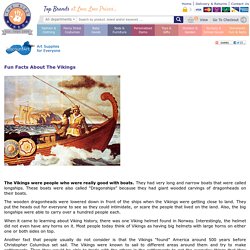
They had very long and narrow boats that were called longships. These boats were also called “Dragonships” because they had giant wooded carvings of dragonheads on their boats. The wooden dragonheads were lowered down in front of the ships when the Vikings were getting close to land. They put the heads out for everyone to see so they could intimidate, or scare the people that lived on the land. Also, the big longships were able to carry over a hundred people each. When it came to learning about Viking history, there was one Viking helmet found in Norway. Another fact that people usually do not consider is that the Vikings “found” America around 500 years before Christopher Columbus set sail. Throughout history, many cultures made it difficult for women to have a say so over the rules. Like the type of religion in ancient Greece or Rome, the Vikings worshiped a various number of Gods and Goddesses.
The Vikings. Middle Ages for Kids: Vikings. Back to Middle Ages for kids.
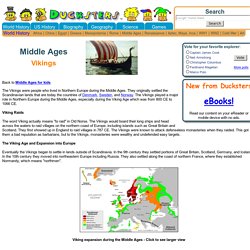
Viking Timeline. NG KIDS - 10 facts about the Vikings. Join the National Geographic Kids gang as we learn about life as a Scandinavian sea-warrior!
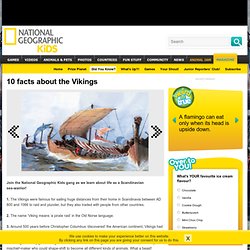
1. The Vikings were famous for sailing huge distances from their home in Scandinavia between AD 800 and 1066 to raid and plunder, but they also traded with people from other countries. 2. The name ‘Viking means ‘a pirate raid’ in the Old Norse language. 3. 4.